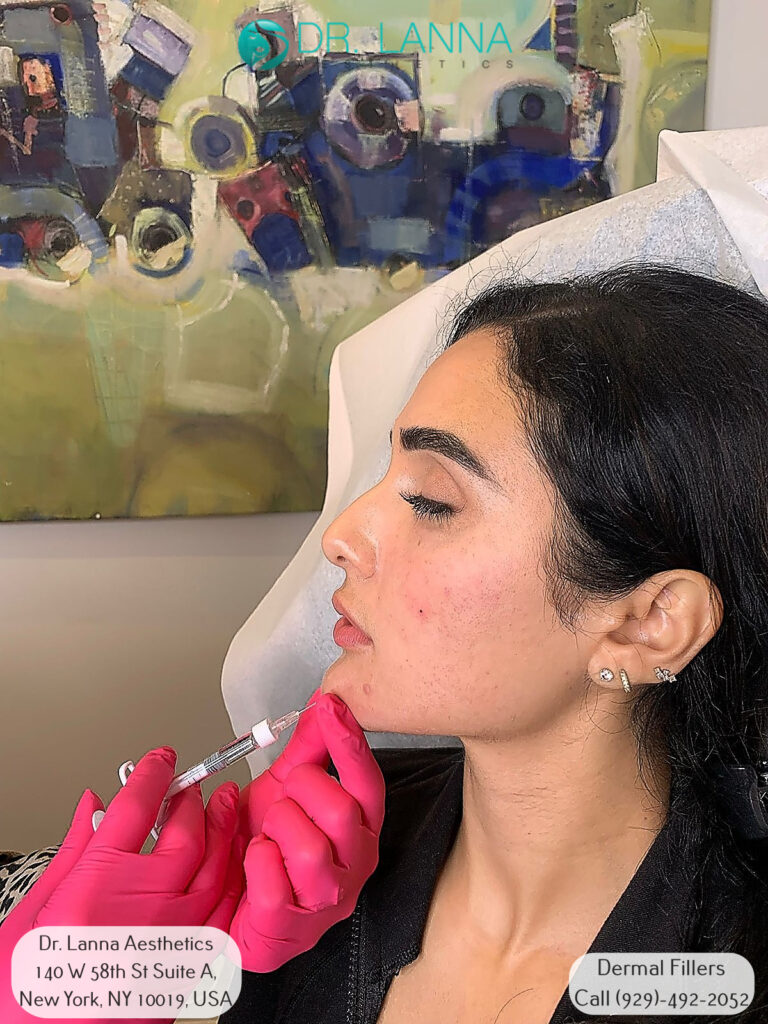Fillers are among the easiest ways to improve the appearance of the chin area. A sculpted chin is one of the hallmarks of a youthful look, which is why many people are opting for these treatments. More medical spas and wellness centers are offering these fillers to the public, although you’ll need proper consultation before injection.
But what filler is best for chin area augmentation? Most chin fillers are made from hyaluronic acid (HA), a naturally occurring chemical in the body. The acid is responsible for keeping the skin as flexible as possible. There are also fillers made out of calcium hydroxylapatite — these last longer than HA fillers but are still being studied for their effects.
For cheek augmentation, gel-based fillers are most frequently used. These are commonly made from hyaluronic acid, a substance present in the human body. Hyaluronic acid is known for its effects on skin flexibility. Since it naturally occurs in the body, it’s tolerated well by most patients.
Another commonly used material is calcium hydroxylapatite, which lasts longer than other filler materials. Much like HA, it’s also used for augmentation procedures that add definition to facial features. However, note that calcium hydroxylapatite is less common than HA fillers.
Hyaluronic acid (HA) is converted into an injectable form that functions as a dermal filler. HA is naturally produced by the body and can be found in the skin and joints. The acid helps the skin maintain its elasticity and flexibility, making it a suitable treatment for saggy and baggy skin. Specific to the chin area, it helps add definition and corrects irregularities in jaw shape. Some doctors also use HA fillers to fix issues with the temporomandibular joint (TMJ).
Since hyaluronic acid is easily absorbed by the body, it’s been approved by the Food and Drug Administration (FDA) for cosmetic treatments. Its effects have been studied by the scientific community, and it’s proven to work against facial lines, wrinkles, and other signs of aging. When used as a chin filler, HA reinforces the structure of the jaw and creates a sculpted look for the patient. Effects are usually seen right away.
Before you receive an HA filler injection, you’ll be screened by your specialist first. This pre-treatment screening allows them to rule out any possible contraindications. It’ll also help determine the number of injections you’ll be needing for the procedure. During the operation, a topical anesthetic will be used to make you feel comfortable. You’ll be asked to return for follow-up sessions.
Another type of filler used by doctors and cosmetologists is calcium hydroxylapatite. This substance is associated with fixing facial wrinkles, folds, and other signs of fat loss. In recent years, some specialists have used it for off-label purposes. These include rejuvenating the chin area and adding definition to the jawline. When administered as an injectable, calcium hydroxylapatite is usually combined with lidocaine to minimize pain and discomfort.
Chin fillers can only be administered by licensed professionals. The procedure will be done at the doctor’s office and usually takes anywhere from 15 to 60 minutes. It’s minimally invasive and doesn’t come with any long-term side effects. Professionals who can administer fillers to the chin area include:
Only hyaluronic acid fillers have been allowed by the Food and Drug Administration for wide usage. In most centers and medical spas, HA fillers are used for chin augmentation procedures. Make sure to check if the establishment has a permit to operate in your state.
Most people can undergo an HA filler injection with little to no drawbacks. However, some people may have underlying illnesses that could interact with the injectable filler. Most contraindications are identified during the pre-treatment screening. But if you develop an allergic reaction to the filler, make sure to tell your specialist right away.
Some contraindications to HA injection include:
Additionally, those taking immunosuppressants are advised to pursue other chin treatments instead. Some medications, such as prednisolone, cyclosporin, and tacrolimus, may interact adversely with the acid. Make sure to disclose any maintenance medications to your surgeon before proceeding with treatment.
Chin fillers have a gel-like appearance before they get injected into the target areas. They’re used to reintroduce volume into saggy areas of the chin. Additionally, they’re also associated with collagen production and skin tightening.
Many patients opt to get fillers to counteract the signs of aging. As people age, their chin could sag or droop due to volume loss. And since HA acid helps counteract these effects, it’s been widely used by dermatologists and other specialists in cosmetic procedures. Chin fillers also help reintroduce definition into the jawline, giving it a sharper appearance.
Most people experience results right away. Regardless of the number of injections you receive for treatment, you’ll be able to return to work almost immediately. Your specialist will also recommend some aftercare tips that you can follow to help with recovery.
Before treatment, your specialist will interview you about your medical and surgical history. Knowing what underlying conditions you have will help the surgeon determine if this is the right chin augmentation procedure for you. They’ll also ask you about any medications you’re taking.
These include any supplements, such as St. John’s Wort and ginseng extract. If you’re currently taking these, you’ll be asked to stop a few weeks before the procedure. The same goes for other blood-thinning medications, like ibuprofen and aspirin.
Additionally, you’ll be advised to avoid drinking alcohol for at least 48 hours. Alcohol may increase the likelihood of bruising and swelling after the procedure. And if you’re using hair removal products, your specialist will also request that you temporarily stop using them.
On the day of the treatment, you’ll be asked to refrain from wearing any makeup. Loose and comfortable clothing is also advised, since it’ll be easier for movement. The specialist will start by injecting a local anesthetic to numb the region. The target areas will also be sterilized to minimize the risk of infection. Your surgeon may use a cannula to ensure precise movement.
The specialist will then inject the fillers into the target areas in the chin. This will be done slowly and carefully to avoid errors. Your doctor will also evaluate the results after each injection, since these can be seen almost immediately. On average, the entire procedure takes less than an hour.
After the procedure, you may notice mild bruising around the injection site. Your doctor will prescribe you an ointment to encourage healing. You’ll also be asked to use a cold compress to help bring down any swelling.
For many patients, results can be seen right after an injection. You’ll enjoy the effects of a more defined chin for at least 5 to 9 months. In some cases, the effects may last for as long as 2 years. The thickness of the target area may also impact the duration of effects. It may take a longer time for the results to be clearly visible if you have a naturally thick chin.
Most side effects related to HA injections resolve quickly. These are usually localized to the injection site and go away within a week. Your doctor may allow you to take Tylenol to help with mild pain. Just follow the packaging instructions to avoid a possible overdose.
The most common side effects include:
In very rare cases, some people may develop skin nodules due to their immune system’s hyperactivity. You can ask your doctor about these during a follow-up session. A corticosteroid injection may be used to get rid of them. Make sure to watch for the hallmarks of infection — pus leakage, intense pain, and fever. Call your doctor right away if you notice any of these.
In some cases, people may experience complications if the needle accidentally punctured an artery or nerve. This can lead to a blockage or severe scarring. To prevent this from happening, make sure that your specialist is licensed and has a good track record.
Recovery from the chin augmentation procedure doesn’t take a long time. Besides cleaning the area properly, you can also speed up recovery by avoiding direct exposure to sunlight. It helps to wear sunblock with at least 30 SPF to protect you from harsh ultraviolet rays.
Additionally, you can also up your water intake to help the body repair itself. It’s advisable for clients to have at least 2 liters of water a day. Eating healthy food items can also help the body look and feel younger. Of course, avoiding physical and mental stressors can do wonders for the chin.

It’s important for your injector to know how to properly administer hyaluronic acid. Before you undergo treatment, it’s important that you receive proper screening to check for contraindications. You’ll also need to know the track record of your specialist.
At Dr. Lanna Aesthetics, we have a capable team of doctors and estheticians. Our team only uses approved and legal chin fillers. With our expertise and track record, we can assure all clients that they’ll feel revitalized after each treatment. Send us a message today and book a filler injection session.

New Patients Enjoy $100 OFF on Tox or Filler Appointments!
*minimum 1 full syringe or minimum 25 units; Cannot be combined
